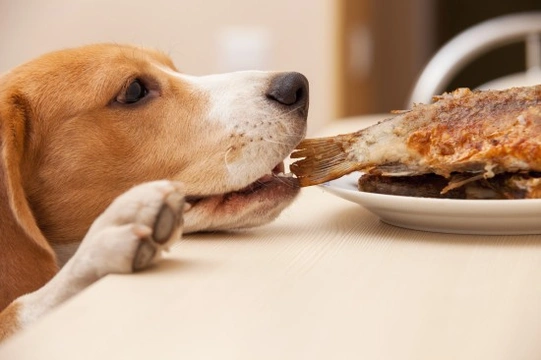
How much protein does your dog need in their diet?
Protein, which comes from meat, fish, eggs and some plant matter is vital to the diet of the dog, and should be at the top of your dog food’s ingredients listing. However, in some cases too much protein can be a bad thing, and exactly how much protein any dog needs will depend on a range of factors. For most dogs, a balanced, complete diet will provide all of your dog’s protein requirements, but even within good quality dog foods, the levels of protein compared to other ingredients can be very variable.
On top of this, the source of the protein within the food can vary from case to case, with the better quality foods providing most of their protein via meat, with other offerings containing more protein-rich plant matter or substitutes for meat.
If you are wondering about your own dog’s protein requirements and how you can be sure that you are getting the balance right, read on for some more information.
What is the average protein content of dog food?
While you might fairly assume that dogs, being carnivorous, should be eating a really high percentage of protein, in reality the average protein content of a complete diet should be 20-30%. This allows for a reasonably high degree of variation too, with food of 30% or any more than this being considered to be very protein rich, and 20% or less being low. The middle of the field, 20-30% is generally considered to be average and appropriate to fulfil the protein balance requirement of most dogs.
It is uncommon to find a mainstream commercial diet that contains more than 30% protein, and if you do come across one, do not automatically assume that more protein is better. Foods containing less than 20% protein again are uncommon and are usually only sold as specialist prescription diets, for dogs that need lower protein levels due to a health condition.
What does protein do?
All dogs need a certain percentage of protein in their diets, and it is not possible to feed a very low or zero protein diet to your dog and expect them to thrive. Protein is one of the essential elements and building blocks of the healthy diet, and it helps to support good muscle tone, strong healthy bones, the appropriate body mass, and correct nerve function. It is also elemental in the regeneration of cells, and the proper healing of wounds.
If a dog does not get enough protein within their diet, they will find it very hard to maintain a healthy body weight, and will generally be rather thin and generally look in poor condition, with a lacklustre coat and various other obvious indications of malnutrition. However, exactly how much protein your dog ultimately needs to thrive will depend on factors such as their age, breeding, size, wellbeing and health, and how active they are. It is a good idea to talk to your vet about your dog’s diet during their annual checkups, and find out your vet’s opinion on your dog’s nutritional requirements and protein needs.
Is all protein good?
Just as with any other food ingredient, the quality of protein provided within any given diet can be very variable. Better quality dog foods will contain protein from a better quality source, and ideally, the main source of protein within the food should be a named, good quality meat.
For instance, look for the ingredient header to be chicken, fish, beef or lamb, rather than being generically called “meat,” or meat by-products. Ingredient labels do not always tell you what percentage of the food is composed of what ingredients, but all of the listed ingredients will run down from the largest to the smallest, and one of the meat products mentioned should be at the top. Meat by-products, soya, wheat and corn do not provide good quality protein for your dog, so steer clear of these within ingredient listings.
What types of dogs need lots of protein?
Certain types of dogs and dogs at different life stages will need more protein than others, with puppies being top of the list as they need plenty of protein to support healthy growth and development. Dams that are pregnant or nursing too need lots of protein, as do very active dogs that work outside, get lots of exercise, or compete in canine sports. Growing dogs and puppies and those with very active lifestyles will have higher protein requirements than other dogs.
What types of dogs need lower protein?
Diets aimed at mature dogs are generally rather lower in protein than those for adult dogs, as this is easier to digest and also, the older the dog, the less active they will tend to be.
Certain health issues also dictate that a lower protein diet is needed, particularly in the case of diabetic dogs or those with impaired kidney or liver function.
If you suspect that your dog’s lifestyle or health issues may mean that they will benefit from a lower protein diet, talk to your vet for advice before you make any changes.



